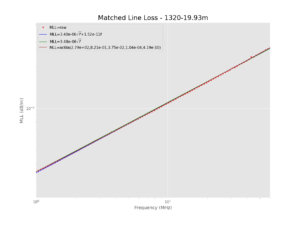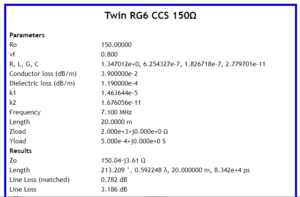Shawn, KB1CKT, set about measuring the matched line (MLL) loss of a roll (~152.4m) RG6/U on the roll and published his results in an online discussion.
A word of warning: measuring on the roll can give unusual results if the cable is deformed significantly on the roll. A higher risk for foamed dielectric cables, and this is one of that type.
The technique he followed was to make a series of measurements of Rin at low Z resonances of the length of line with open circuit at the far end, and to calculate the MLL using Calculate transmission line Matched Line Loss from Rin of o/c or s/c resonant section.
Impedance measurements were made using a nanoVNA which was OSL calibrated in several ranges through the series of measurements. Also notable was that there were several coax adapters used to connect the RG6 to VNA.
Though the calculator can use high Z resonances, the high Z resonances are very narrow and it is very difficult to measure Rin at the true resonant frequency. So, only his reported low Z measurements will be used.
So. let’s graph the measured Rin at zero crossing of Xin.

The circled measurements appear out of line with the others. They were made with a different OSL calibration that the ones immediately below and above, so that hints something may have gone wrong in the calibration. Two of the possible explanations are: Continue reading KB1CKT measurement of a roll of RG6/U
Last update: 29th November, 2020, 7:04 AM







